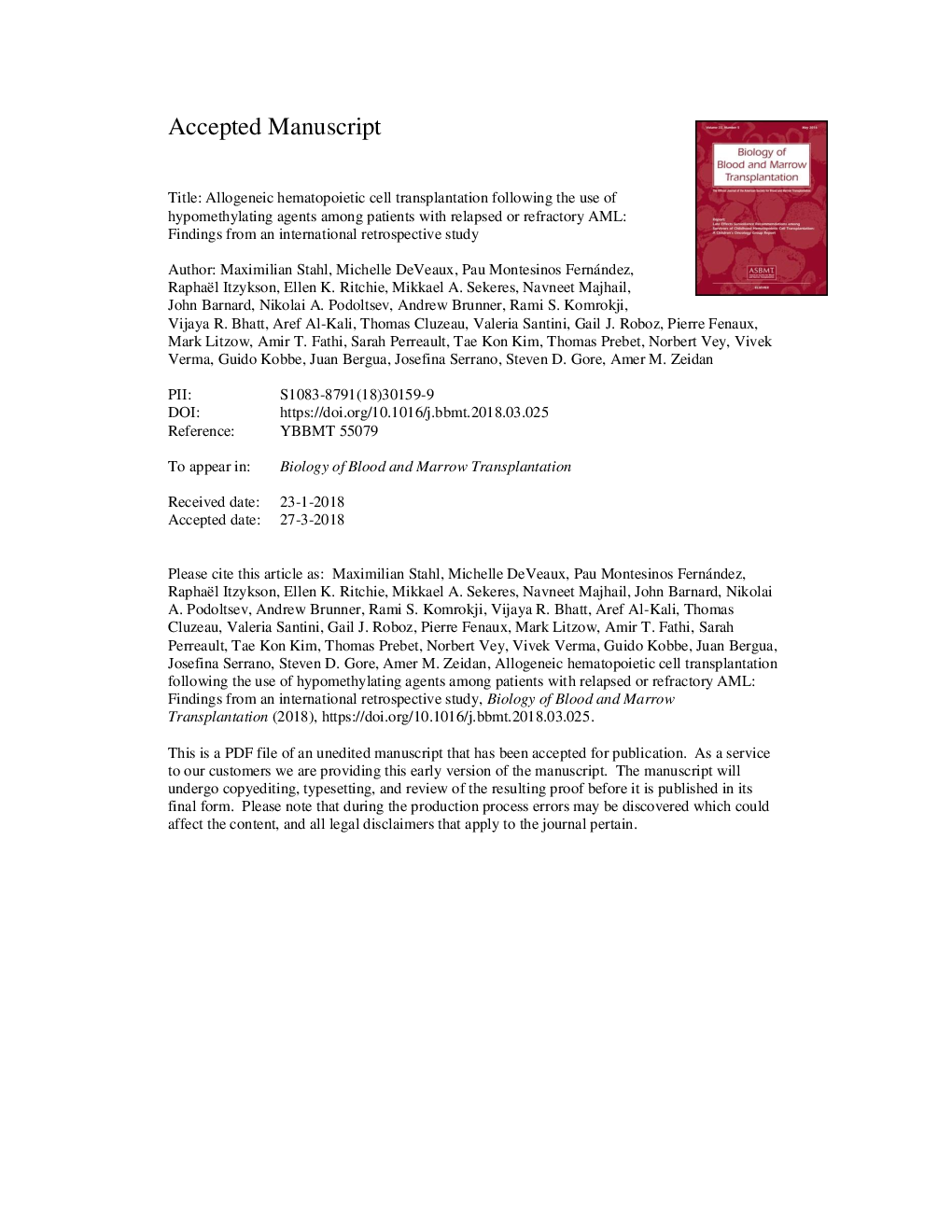| Article ID | Journal | Published Year | Pages | File Type |
|---|---|---|---|---|
| 8949673 | Biology of Blood and Marrow Transplantation | 2018 | 11 Pages |
Abstract
Patients with primary refractory or relapsed acute myeloid leukemia (RR-AML) have very poor prognosis. Due to limited treatment options, some patients are treated with hypomethylating agents (HMAs) due to their tolerability. Little is known about the role of allogeneic hematopoietic stem cell transplantation (HSCT) following HMA therapy in this setting. We retrospectively analyzed an international cohort of 655 RR-AML patients who received HMA therapy to study patterns and outcomes with HSCT. Only 37 patients (5.6%) patients underwent HSCT after HMA therapy. The conditioning regimen was myeloablative in 57% and nonmyeloablative in 43%. Patients received matched unrelated donor, matched sibling, haploidentical and mismatched unrelated HSCT in 56%, 24%, 16% and 4% of cases, respectively. Acute GvHD and chronic GvHD were observed in 40% and 17% of patients. While the median OS for the entire cohort of patients was 15.3 months (95% CI 9.5 - 21.7 months), OS reached 29.7 months (95% CI 7.01 - not-reached) for patients who achieved a complete remission (CR) to HMA and no intervening therapies between HMA therapy and HSCT. Our study suggests that HMA therapy can effectively bridge some patients with RR-AML to HSCT.
Related Topics
Life Sciences
Biochemistry, Genetics and Molecular Biology
Cancer Research
Authors
Maximilian Stahl, Michelle DeVeaux, Pau Montesinos, Raphaël Itzykson, Ellen K. Ritchie, Mikkael A. Sekeres, Navneet Majhail, John Barnard, Nikolai A. Podoltsev, Andrew M. Brunner, Rami S. Komrokji, Vijaya R. Bhatt, Aref Al-Kali, Thomas Cluzeau,
